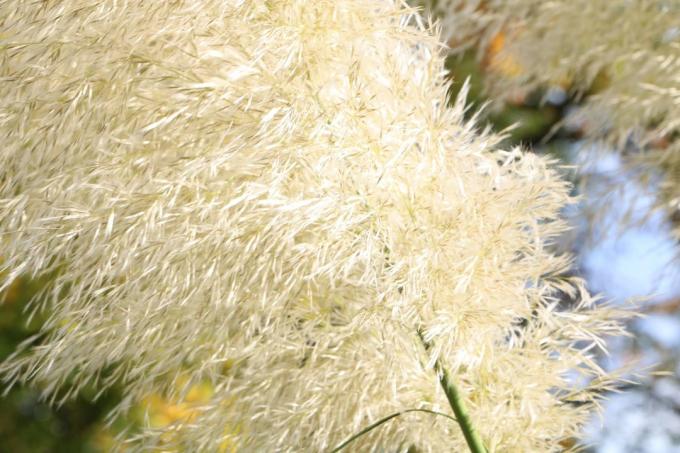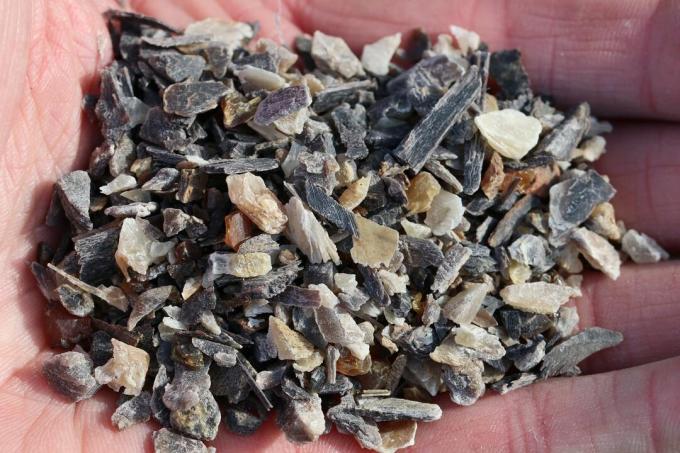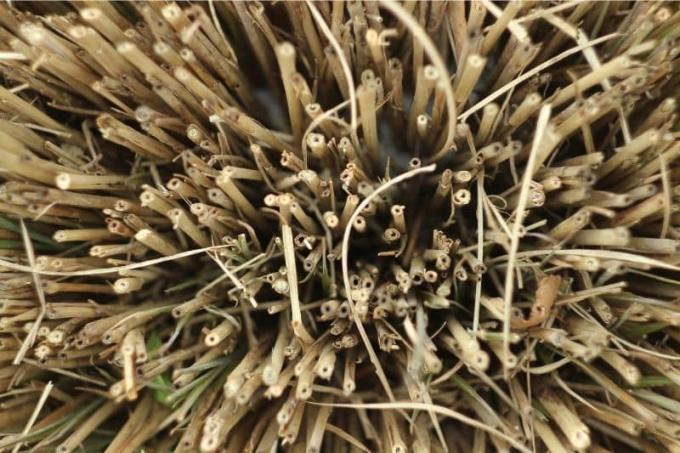
Pampas grass is one of the most beautiful ornamental grasses. However, it may take some time before it reaches its maximum size. But what if it doesn't want to grow at all? How to react correctly when pampas grass is not growing.
In a nutshell
- grows slowly when freshly planted
- very fast growth after acclimatization phase
- affected by location and care
- hardly any growth under unfavorable conditions, no frond formation
Table of contents
- Eliminate growth restrictions
- Choose a more suitable location
- Optimize water supply
- Fertilize as needed
- Observe the correct cutting time
- Adjust bucket size
- frequently asked Questions
Eliminate growth restrictions
In the first few weeks after planting Pampas grass (Cortaderia selloana) grows very slowly as it is now primarily focused on growing. Once this phase is complete, you can almost watch it grow. However, this requires the best possible conditions. Is the growth of ornamental grass On the other hand, if you are inhibited, you should determine the causes and remedy them as quickly as possible. In most cases, unfavorable site conditions and mistakes in care are responsible. How to prevent pampas grass from growing.
Choose a more suitable location

For example, if the pampas grass is too dark, too cool or in poor soil, this affects growth on the one hand and also on the other the formation of flowers. Then you should do the following:
- transplant plant
- place in a sunny, warm and wind-protected place
- with several hours of sunlight per day
- shady locations completely unsuitable
- Look for deep, well-drained soil
- avoid heavy, compacted subsoil, there is a risk of waterlogging
- Improve soil with compost or humus
- Prevent wetness with a drainage layer in the ground
Optimize water supply
Both persistent drought and too much moisture can ensure that the pampas grass only grows poorly or not at all, although short-term drought is still tolerated better than waterlogging. It is all the more important to find the right measure when pouring:
| When dry | When it's too wet |
|---|---|
| water thoroughly apply an additional layer of mulch spread evenly around the plant pour in longer, low-rainfall phases |
do not water in the coming weeks Let the floor dry well Adjust pouring amounts to natural precipitation It is best to repot potted plants not water for some time |
Fertilize as needed

If the location, soil and water supply are in order and growth is still disturbed, this can indicate a nutrient deficiency. Even if there is a deficiency, you should not fertilize directly, but find out where the reason for the deficiency lies.
- was not fertilized for a long time, now make up for it
- Was fertilized regularly, change fertilizer if necessary
- there is no success soil pH testing
- sometimes there is a lack of a certain nutrient or trace element
- supply them with irrigation water in addition to the fertilizer
Tip: Corresponding test Test strips are available in pharmacies, drugstores and in some specialist shops. It's best to test the ground before trying anything else.
Observe the correct cutting time
Cutting pampas grass already back in autumn, the eyrie is practically exposed, so that it is exposed to moisture and moisture without protection. This can cause it to rot and not grow back in the spring. This is how you react correctly if pampas grass does not grow due to incorrect cutting:
- dig up plant
- remove rotten and dead parts
- plant healthy parts including roots
- preventively cut only in the spring
- Tie the stems together in a tuft in autumn
- Horst protected from moisture

Adjust bucket size
Specimens in pots usually need a little more attention. Here even a bucket that is too small can lead to the pampas grass only growing poorly or not at all. Then you need to do the following:
- Repot the plant and remove loose soil
- transfer to larger buckets
- Capacity of at least 40 liters required
- Don't forget drainage on the bottom of the pot
- Fill in the substrate, insert pampas grass in the middle
- fill with soil, press down, water well
As with planting in a bed, the soil in the pot should not be too hard or too clayey, but rather loose and humus-rich. By adding sand, it can be loosened up if necessary.
Tip: Repotting is generally a good opportunity to divide and thus rejuvenate the pampas grass.
frequently asked Questions
Pampas grass usually sprouts relatively late. Over the winter it goes dormant without any growth. If the winter was particularly long, budding can be delayed until May. As soon as the new shoots appear, you should cut down the old dry stalks.
Depending on the variety, this ornamental grass can grow between 100 and 300 cm in height in one season. The stem growth is up to 150 cm, while the flowers or the fronds can reach up to 300 cm in height. Low varieties, which are particularly suitable for keeping in tubs, reach heights of growth of between 60 and 80 cm.
Planting should only take place when the ground is frost-free. This is usually the case after the ice saints, i.e. mid-May.
It usually takes several years, with male plants generally developing significantly fewer flowers or no flowers at all in contrast to female plants. Flowering time is from August/September to winter, depending on the variety.



